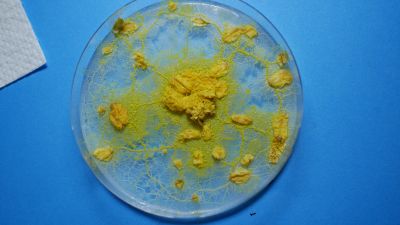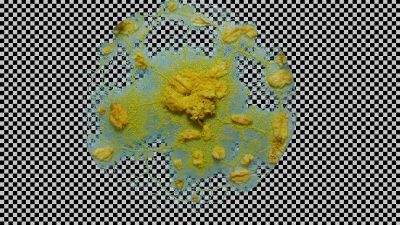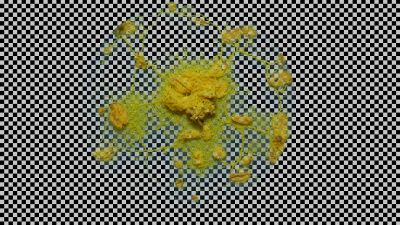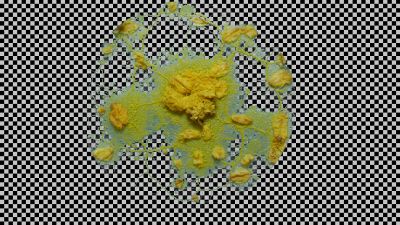Making VFX Assests with Physarum Polycephalum
Whats struck me the most when I first saw slime mold was its look. The fine details and the seemingly chaotic structure where simply enchanting. My initial thought was: "I need to use that for a film." So the question is: Is it possible to transform images of slime mold into usable assets for VFX works? And to be precise: I do not want to recreate the look, I want to use actual footage. So the goal is to make keyed versions of timelapse footage of physarum growing, that can then be reapplied in changed perspective to other surfaces in vfx software such as Adobe After Effects.
Concept:
Normaly, keying is done by shooting objects against a green background. However, since Physarum tends to to a green-yellow color, blue seems to be a better alternative. It offers both greater color- and luminance-contrast. Secondly, in order to see the finest details I need to shoot as high resolution as possible. To maximize any cameras resolution I need to find a way to grow Physarum on square plates (best in 4:3 ratio) to use the whole sensor.
I did a quick test using single photos.
I simply placed a good looking specimen on a cyan (sadly not blue!) piece of cardboard that I had lying around. Next, I imported the picture into AE to see if it was keyable.
Sadly, using standard keying software, the diffusion of the medium and the fine veins of Physarum left a big cyan border. Its not unusable but would need a lot of work to be up to standards. So I tried a different method: I extracted the blue channel of the image and used its inverse as a luma matte.
The upside of this method is that it results in translucent parts of the image. Most keying software (I used the built-into-AE Keylight) only produce images that have either completely transparent or completely opaque parts. Physarum naturally transmits a lot light that passes through it. The thicker the veins, the more opaque they get. In image-terms you could "measure" the thickness / opacity by looking at how yellow Physarum is. In the picture you can see quite well that some veins are more translucent than others. The issue with this method is that white (as in specular highlights) clips the blue channel as well. So not only does the background get keyed out, but also each reflection. Sadly, Physarum is very shiny, so in any lighting setup, where lights are above it, there will be reflections.
In order to avoid that, I used a third method of keying. For this, I used Adobes color grading software Lumetri. In there I used a HSL-selection to better target my cyan-color. This gave me much better control of the result, as I could set specific ranges of saturation and luminance and thus control the translucency.
Still, I think I need to find a better way for keying. In the current figuration, Physarum casts too much shadow onto the background. In order to improve my results and to film the real-deal-timelapses, I need to look into the following things: 1. I need a lighting setup, that doesn't create as harsh highlights. A big source is needed. However, its not very economical to leave a big LED running over night, if I only take pictures every 10 minutes or so. I will look into an arduino-solution. 2. Physarum casts shadows. There are two possible ways to avoid this. Either I have to increase the distance to the background (by e.g. filming vertically instead of top-down), or I need to see, if physarum would grow on a blue medium. Having seen the issues other students had with food-coloring, I think I will try using small amounts of pure pigment or acrylic based paint. 3. I need to figure out, what size of plate I want. With these test-shots, the resolution was not sufficient to see the finest veins. My original plan was to use 20x40cm plexiglas sheets, but I am thinking of going more with 2x4cm. This would also diminish filming times maybe to the point where it makes sense again to just leave LEDs on the whole time.



